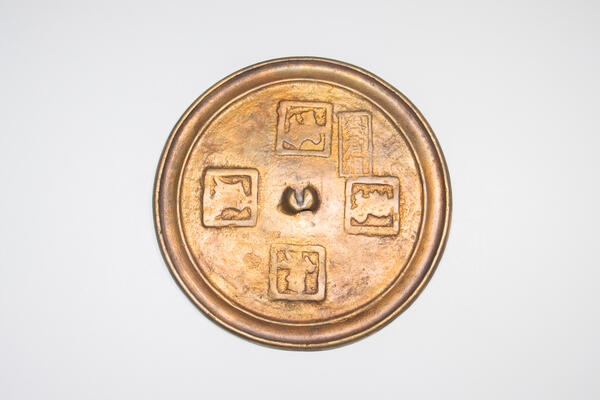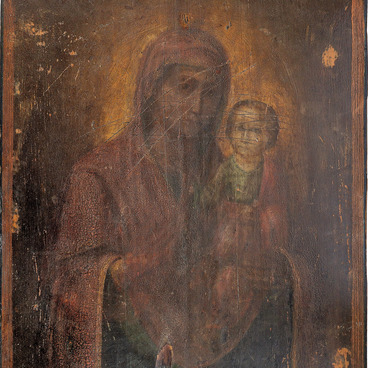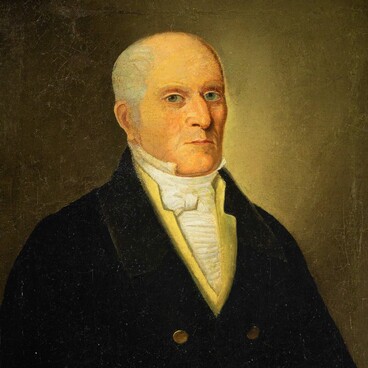Mirrors began to be produced in Siberia in the middle of the second millennium BC. In China, they appeared later, approximately in the 8th century BC, and their form was similar to the Siberian ones. And from the 5th–4th centuries BC when trade routes were established, the Silk Road, in particular, the import of Chinese products to the neighboring lands began. This is how the mirrors reached the territory of Minusinsk Hollow and further to the west.
The Chinese mirrors discovered in Southern Siberia were first mentioned in the book by the Dutch Nicolaes Witsen in 1692. The author provided an image of a similar mirror, which was found on the territory of the modern Sverdlovsk region.
The copies of Chinese mirrors began to be made in Siberia. They were also called ‘Chinese’. They were cast from bronze, tin, cast iron, noble metals alloys. The reflective surface was covered with amalgam (an alloy of mercury with other metals) and carefully polished.
Mirrors played a special role in Chinese art and culture. They were used in ritual ceremonies. According to the Chinese, mirrors could bring the deceased back to life, show the essence of natural phenomena and creatures, clean from taint, and scare away malign forces. There was a legend: if you sprinkle the mirror surface with a pearl powder, its rays will pass through walls. People also thought that if you smoke the mirror with incense and wash with water infused in jade, you can see the internal parts of people and animals. The Chinese believed that a mirror could protect them from imps, as it reflected the true face of evil spirits and werewolves.
The displayed mirror has a round shape. A round loop with a cut-off top is at its center. There are four crosswise characters in square frames in the ornamental field: luan, feng, hexiang, which translates as ‘Peace and happiness to the phoenixes’. Between the first and the third characters is another frame with characters ‘Сai Jun Xiang’. Researchers suppose that they mean the name of the master who created the mirror.
This and other Chinese mirrors came to the museum before the Russian Revolution of 1917. The documents to them were lost.
The Chinese mirrors discovered in Southern Siberia were first mentioned in the book by the Dutch Nicolaes Witsen in 1692. The author provided an image of a similar mirror, which was found on the territory of the modern Sverdlovsk region.
The copies of Chinese mirrors began to be made in Siberia. They were also called ‘Chinese’. They were cast from bronze, tin, cast iron, noble metals alloys. The reflective surface was covered with amalgam (an alloy of mercury with other metals) and carefully polished.
Mirrors played a special role in Chinese art and culture. They were used in ritual ceremonies. According to the Chinese, mirrors could bring the deceased back to life, show the essence of natural phenomena and creatures, clean from taint, and scare away malign forces. There was a legend: if you sprinkle the mirror surface with a pearl powder, its rays will pass through walls. People also thought that if you smoke the mirror with incense and wash with water infused in jade, you can see the internal parts of people and animals. The Chinese believed that a mirror could protect them from imps, as it reflected the true face of evil spirits and werewolves.
The displayed mirror has a round shape. A round loop with a cut-off top is at its center. There are four crosswise characters in square frames in the ornamental field: luan, feng, hexiang, which translates as ‘Peace and happiness to the phoenixes’. Between the first and the third characters is another frame with characters ‘Сai Jun Xiang’. Researchers suppose that they mean the name of the master who created the mirror.
This and other Chinese mirrors came to the museum before the Russian Revolution of 1917. The documents to them were lost.



